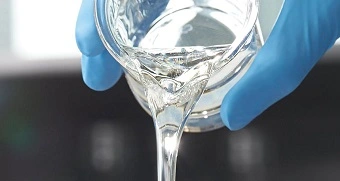Octamethylcyclotetrasiloxane: Balancing Industrial Benefits & Environmental Impact
19 Mar 2025 • by Natalie Aster

Octamethylcyclotetrasiloxane, commonly referred to as D4, is a silicone compound that is crucial in multiple industrial applications. It serves as a foundational ingredient in the production of silicones, which are utilized across a wide array of products including cosmetics, hair care products, and even in the automotive and construction industries. The unique chemical properties of D4, such as its low surface tension and high thermal stability, make it an invaluable component in enhancing the performance and durability of silicone-based materials.
Industrial Utilization of D4
Role in Silicone Manufacturing
D4 is primarily used as a monomer in the manufacture of polydimethylsiloxane (PDMS), a type of silicone that offers exceptional flexibility and moisture resistance. This makes PDMS an ideal material for sealants, lubricants, and insulating materials, pivotal in extending the lifespan and efficiency of various mechanical and structural components in automotive and aerospace technologies.
Applications in Personal Care Products
In the realm of personal care, D4 contributes significantly to the formulation of non-greasy, easy-to-spread emollients that are found in a variety of skincare and haircare products. Its ability to evaporate quickly and leave a soft, dry feel on the skin without clogging pores is highly valued in the cosmetics sector.
Environmental Concerns Associated with D4
Persistence and Bioaccumulation
Despite its industrial benefits, D4 raises considerable environmental concerns. Studies have indicated that it is persistent in aquatic environments, which means it does not readily degrade and can remain in ecosystems for extended periods. Furthermore, D4 has shown potential for bioaccumulation, meaning it can build up in the tissues of living organisms over time, potentially leading to harmful ecological effects.
Toxicity to Aquatic Life
Research has demonstrated that D4 can be toxic to aquatic organisms, with potential adverse effects on reproduction and development in wildlife. This toxicity, coupled with its persistence and propensity to bioaccumulate, poses a threat to aquatic biodiversity and the health of water-based ecosystems.
Regulatory Actions and Industry Response
Global Regulatory Landscape
In response to these environmental concerns, regulatory bodies across the globe have started to take action. The European Union, for instance, has classified D4 as a substance of very high concern (SVHC) under its REACH regulation, primarily due to its persistence and bioaccumulation characteristics. Similar regulatory measures are being considered in other regions, including North America and Asia, to control the environmental release and use of D4.
Innovations in Silicone Production
The silicone industry has recognized the need to mitigate the environmental impact of D4 and is actively researching alternatives. Advances in green chemistry are being explored to develop new silicone monomers that maintain the beneficial properties of D4 but with reduced environmental risks. This includes the synthesis of biodegradable silicones and the improvement of manufacturing processes to minimize the release of harmful substances.
Future Directions: Balancing Benefits and Risks
Enhanced Biodegradability and Reduced Toxicity
The future of D4 and similar compounds lies in the ongoing development of new materials that can provide the same benefits without the environmental drawbacks. Enhancing the biodegradability and reducing the toxicity of silicone products are pivotal aspects of current research efforts. This not only aligns with global sustainability goals but also with industry standards and consumer expectations for environmentally friendly products.
Industry Collaboration and Policy Development
Continued collaboration between industry stakeholders, regulatory agencies, and environmental organizations is essential to create a sustainable framework for the use of D4. By combining regulatory policies with innovations in chemical engineering, it is possible to maintain the industrial advantages of silicone products while remarkably diminishing their ecological impact.
Final Thoughts
Octamethylcyclotetrasiloxane (D4) exemplifies the complex balance between industrial utility and environmental responsibility. As the global community becomes increasingly aware of and responsive to ecological issues, the challenge lies in leveraging scientific innovation and regulatory frameworks to ensure that the benefits of advanced materials like D4 do not come at the expense of environmental health. Through concerted efforts in research, regulation, and responsible manufacturing, it is possible to harness the advantages of D4 while mitigating its ecological impacts, paving the way for a greener industrial future.
Related Reports:
- Octamethylcyclotetrasiloxane Market Research Report 2025
- Global Octamethylcyclotetrasiloxane Market 2025 by Manufacturers, Regions, Type and Application, Forecast to 2031
- Global Octamethylcyclotetrasiloxane Market Growth 2025-2031
- Octamethylcyclotetrasiloxane (D4) Global Market Insights 2025, Analysis and Forecast to 2030, by Manufacturers, Regions, Technology, Application
- Global Octamethylcyclotetrasiloxane Market Research Report 2024, Forecast to 2032
Market Publishers boasts a rich collection of insightful research studies covering the chemicals and petrochemicals market, find it in the Chemicals & Petrochemicals Market Reports Catalogue.
CONTACTS
The Market Publishers, Ltd.
Natalie Aster
Tel: +357 96 030922
[email protected]
MarketPublishers.com
Analytics & News
